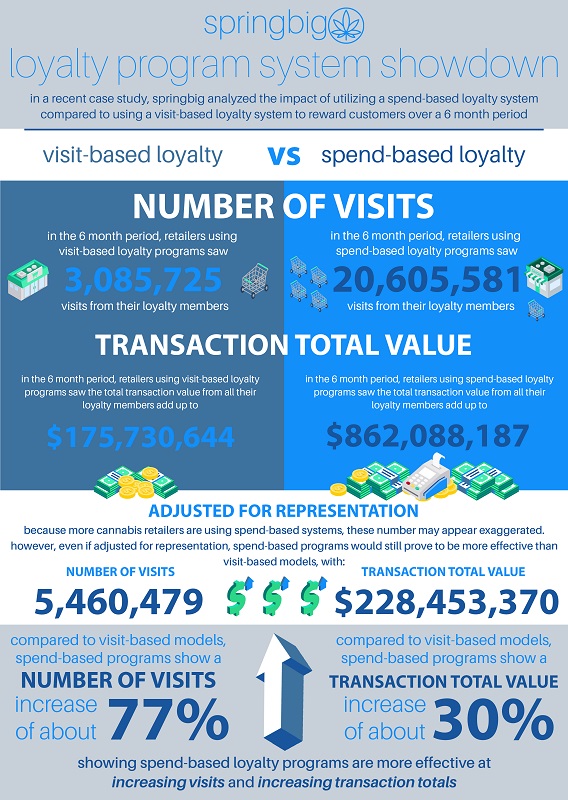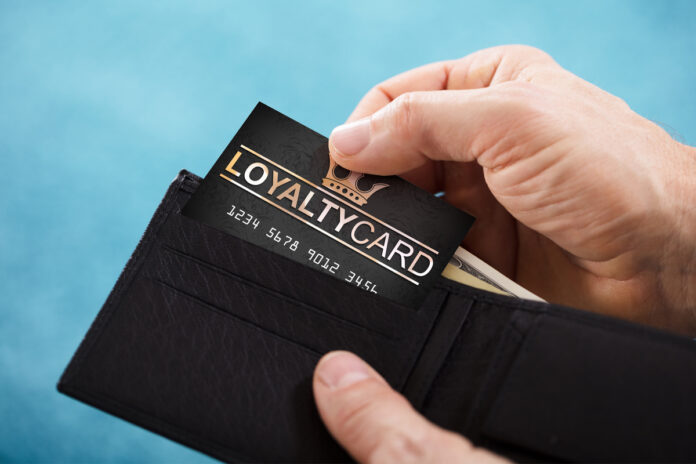Rewards programs generate loyalty for businesses, especially in the emerging cannabis market, where early customer engagement is key to long-term success. But not all dispensary brand loyalty programs are created equal. From a business perspective, it’s not enough to generate loyalty as a check-box item. Retailers also must create a program that makes sense financially.
First, think about what you will reward—visits or purchases? One way to structure a loyalty program is to award a number of points or a discount after a certain number of visits. For instance, a customer might receive a $20 coupon after four visits. But let’s look at what could happen. If the customer spends a lot during each visit—say $100—the $20 reward is a good return on investment from the business’s perspective, representing just 5 percent of the total spend. But what happens if the customer spends only $20 per visit? The reward just jumped to 25 percent of their total spend…and 100 percent of their average spend. Such a promotion might make the customer very happy, but it’s a terrible deal for the business.
Another problem with structuring a dispensary brand loyalty program based on visit count: There is no way to track how much the program costs. Since each customer can spend a dramatically different amount over the course of four visits, the reward value in terms of percentage of sales is unique to each customer. That makes aggregating and measuring how much the program costs as a percentage of total sales impossible. Consequently, understanding how much the program impacts return on investment is impossible.
Also keep in mind that even from the customer’s perspective, a visit-based reward program can be less appealing. If a customer spends less per visit ($20) and, therefore, the percent of reward relative to sale is high (25 percent), that customer is gaining more benefit from your program than the customer who spends more ($100) and their reward percentage is less (5 percent). In turn, the higher-paying customer rightly would feel the loyalty program is worth less for his or her spending patterns. A visit-based structure could backfire and incentivize lower customer spending per visit, which certainly does not help you stay in business long-term.
On the other hand, basing loyalty rewards on purchase amounts can get you the results you hope for—and more importantly, the program’s cost is measurable. For instance, if every dollar spent earns one reward point, then no matter how much a customer spends during any visit, their reward is the same percentage of their overall spending. A $20 coupon is always 10 percent of $200 in spending, whether a customer earns the 200 points in one visit or ten visits. This deal incentivizes bigger spenders: The more they spend per visit, the faster they accumulate points and can redeem rewards. From a business perspective, 10 percent is a fair, market-standard percentage.
In addition, this model allows tracking exactly how much the program costs. Taking the numbers above as an example, the gross cost of the program is 10 percent of sales no matter how much a customer spends. But net actually is far less—closer to 2 percent. Why? First, we subtract the typical 50-percent markup on products, which takes the 10 percent down to 5 percent. Then, we account for 40 percent of customers who never earn enough points to attain a reward level (called “slippage”) and another 30 percent of customers who do earn enough but don’t bother redeeming their rewards (called “breakage”). This formula results in the loyalty program actually costing just 2 percent, net. Clearly, basing rewards on purchasing dollar volume is the more lucrative and financially sound way to structure a loyalty program.
Once you have the right loyalty program in place, you want to make sure customers are engaged with the program and use it. Make the program accessible to all customers by offering a free membership or even a signup bonus. Make reaching the first few tiers easy, so customers will have relatively quick gratification and a strong incentive to keep spending at your dispensary.
For retailers who are figuring out how to push cannabis products and brands, a rewards program may reap long-term returns and happy customers. The key to an engaging rewards program is building a model that creates value for both your customers and, more importantly, your business.











